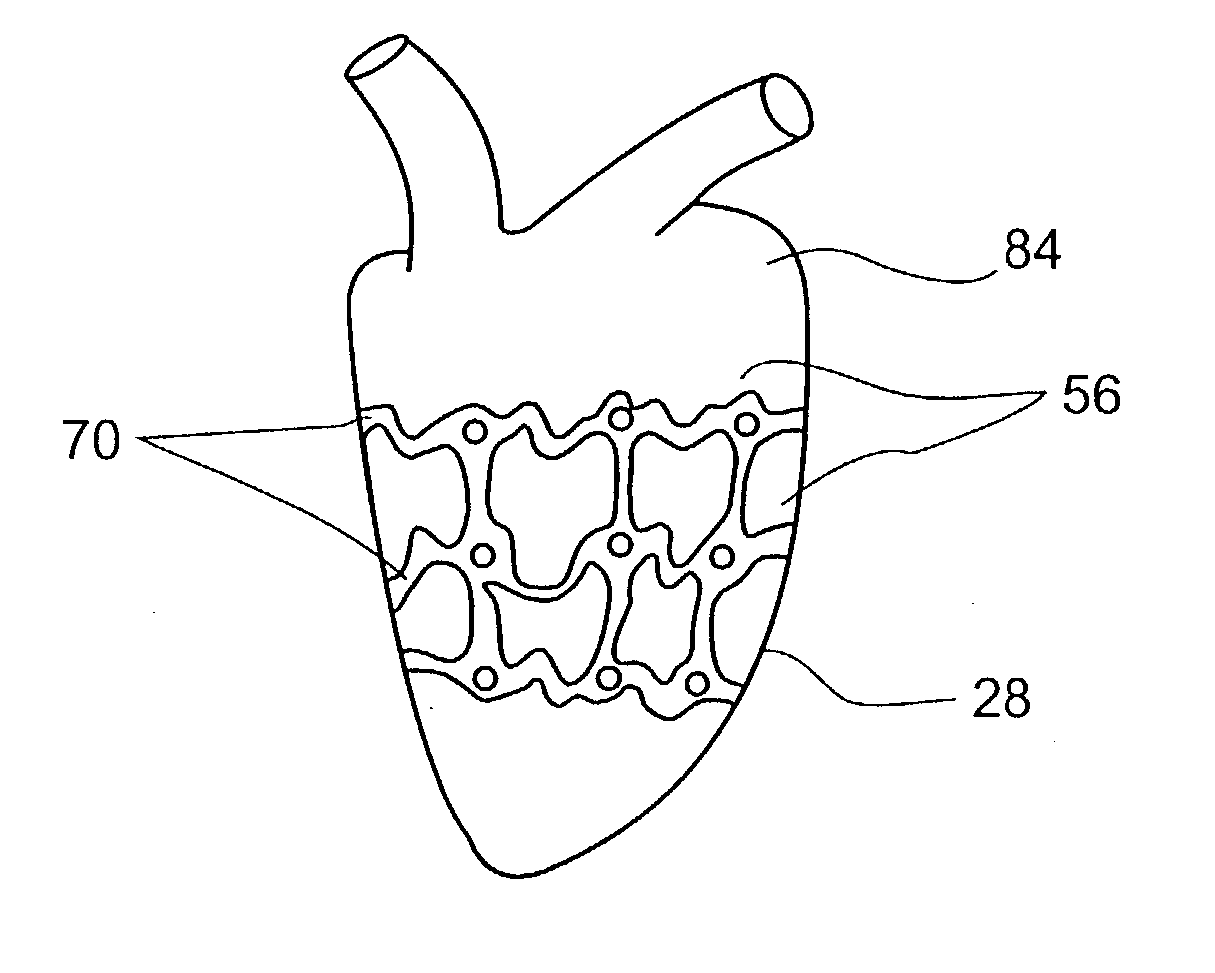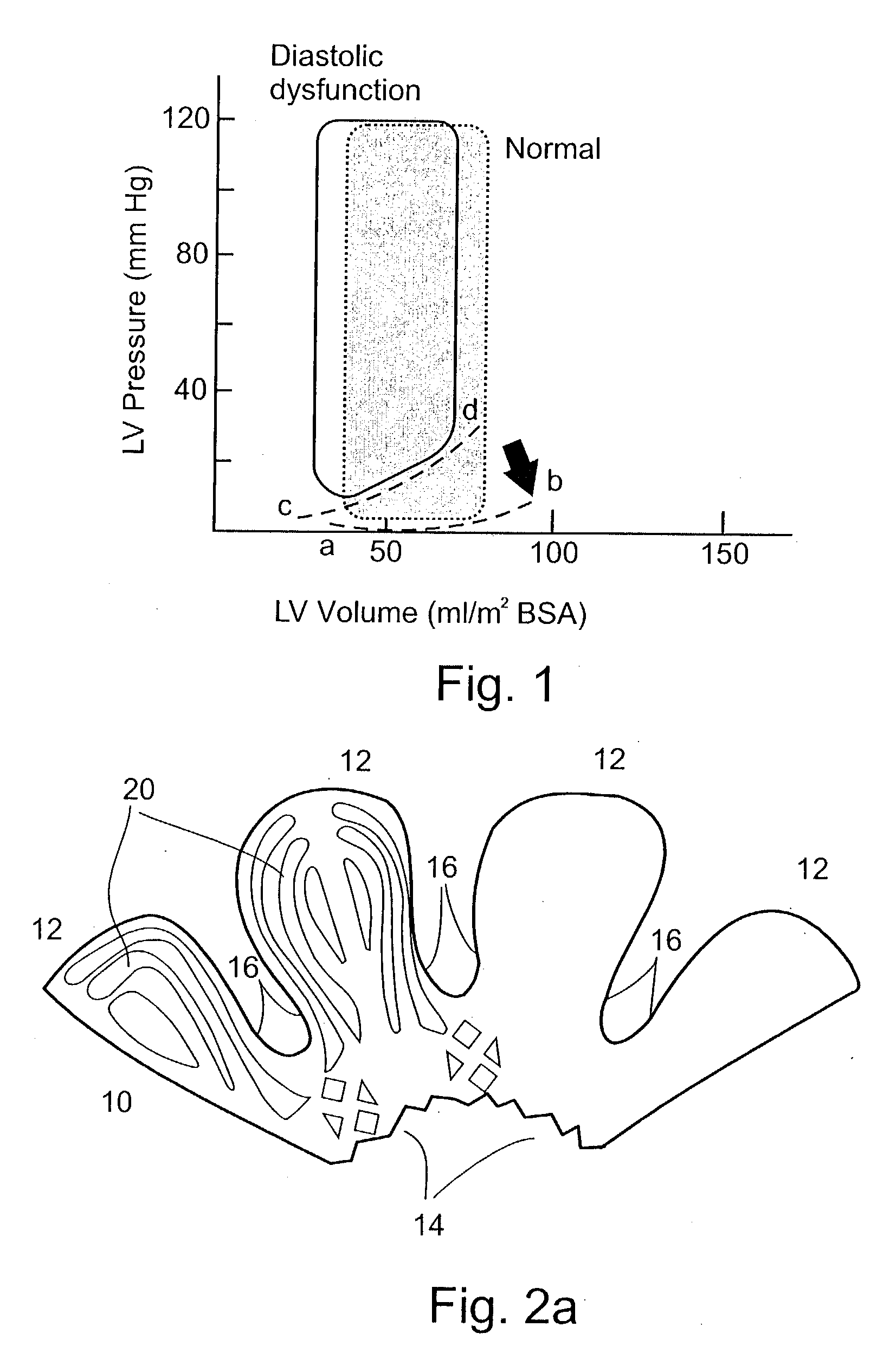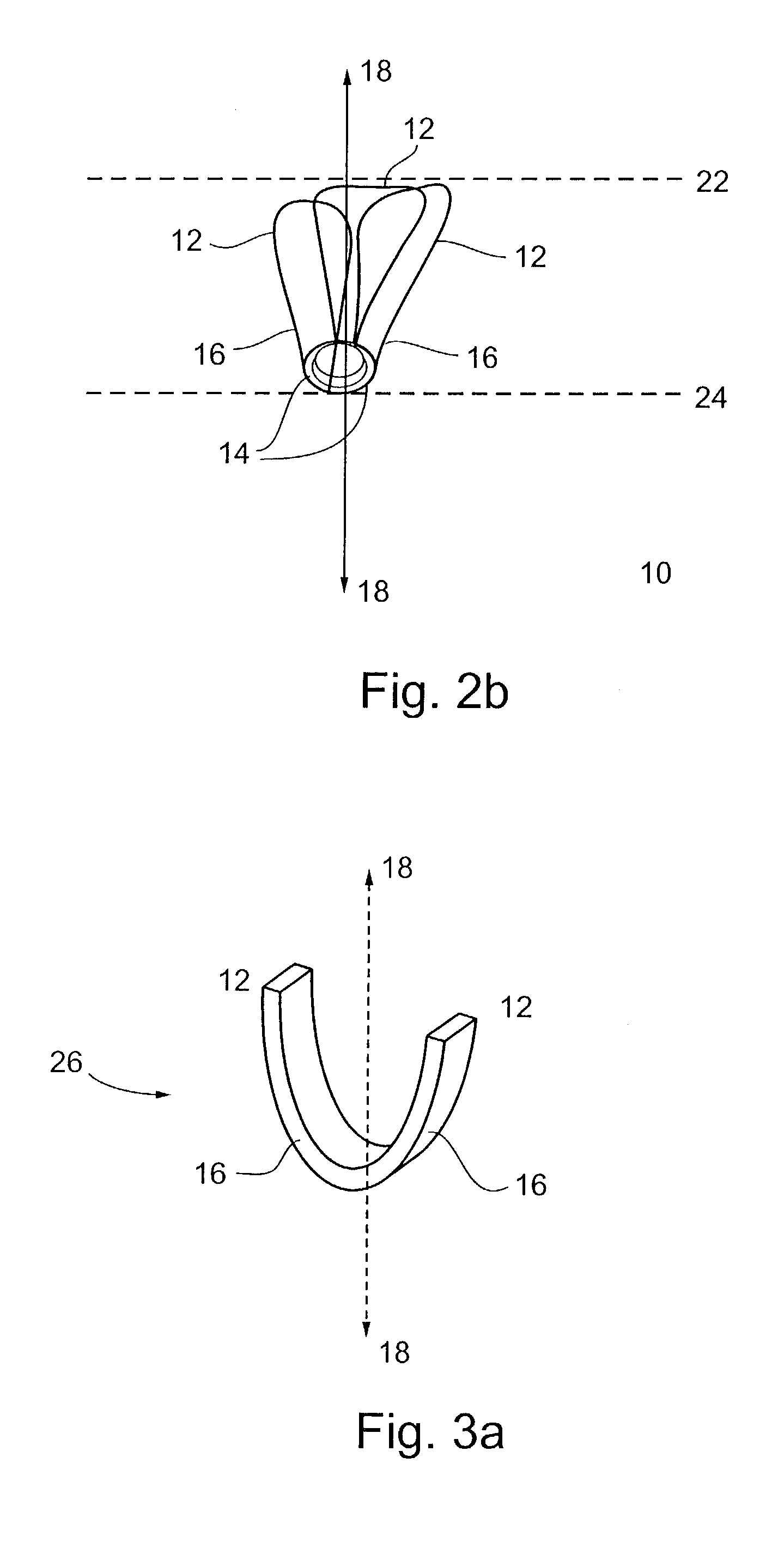In these patients, diastolic dysfunction is implicated as a major contributor of congestive
heart failure.
Thus, diastolic dysfunction increases the modulus of chamber stiffness.
The fundamental problem in
diastolic heart failure (DHF) is the inability of the left ventricle to accommodate
blood volume during
diastole at low filling pressures, as described by Mandinov, L., Eberli, F. R., Seiler, C., and Hess, M. O., in "
Diastolic Heart Failure", Cardiovacular Res. 2000, 45: 813-825.
More severe resistance to LV filling may cause inadequate filling even in enhanced diastolic pressure with an additional leftward shift of the diastolic pressure-volume relation, resulting in a decreased end diastolic volume and depressed
stroke volume, as described by Mandinov, L., et al.
There have been no large-scale, randomized controlled trials of therapy in diastolic heart failure, and there remains substantial disagreement about the appropriate therapy for this
disease, according to Sweitzer, N. K., and Stevenson, L. W., in "
Diastolic heart Failure: Miles To Go Before We Sleep", American Journal of
Medicine, 2000, 109: 683-685.
1. Reduction of central
blood volume. Reduction of
salt intake and use of diuretics (usually, loop diuretics). Diuretics are effective in reducing pulmonary congestion, shifting the pressure-volume relation downwards. However, they must be used with care because the volume sensitivity of patients with diastolic dysfunction bears the risk that excessive
diuresis may result in a sudden drop in
stroke volume. Because of the steep pressure-volume relationship, a small decrease in diastolic volume will cause a large decrease of the filling pressure, and will result in a drop in stroke volume, and thus, in
cardiac output.
2. Reduction of
workload. Reduction of
physical activity, maintenance of emotional rest and use of vasodilators. Vasodilators, such as
sodium nitroprusside or ACE inhibitors reduce the filling pressure and the
afterload in all patients, and elevate
cardiac output. Reduction of an elevated left ventricular end diastolic pressure may improve subendocardial
perfusion, thus improving myocardial contraction. Nonetheless, vasodilators have not been useful in the management of isolated diastolic heart failure and are more effective in combined heart failure, as indicated in the previously cited Braunwald, E. text. Vigorous control of hypertension is imperative in patients with heart failure caused by diastolic dysfunction, because control of hypertension may prevent progression or partially reverse the disorder by addressing the primary cause of most cases, as described by Grauner, K., in "
Heart Failure, Diastolic Dysfunction And The Role Of The Family Physician", American Family Physician, 2001, 63: 1483-1486.
3. Improvement of LV relaxation. In particular, by using
calcium channel blockers or ACE inhibitors. Ca.sup.2+ channel blockers have been shown to improve myocardial relaxation and enhance diastolic filling. These drugs may be best matched to the
pathophysiology of relaxation disturbances due to their ability to decrease cytoplasmic
calcium concentration and reduce
afterload. However, currently, use of Ca.sup.2+ channel blockers is limited due to their negative inotropic effects (negative influence on the systolic function of the heart), and clinical trials have not clearly proven them to be beneficial.
4. Regression of LV hypertrophy. In particular, decrease in wall thickness and removal of excess collagen by ACE inhibitors and AT-2 antagonists or
Spironolactone. Philbin, E. F., Rocco, T. A., Lindenmuth, N. W., Ulrich, K., and Jenkins, O. L., in "Systolic Versus
Diastolic Heart Failure In
Community Practice: Clinical Features, Outcomes, And The Use Of ACE Inhibitors", American Journal of
Medicine, 2000, 109: 605-613, have shown that the use of ACE inhibitors in patients with
ejection fraction equal to or greater than 0.50 was associated with a better NYHA class (New York Heart Association functional and therapeutic classification for stages of heart failure)
after discharge from hospitalization, but had no significant effect on mortality or hospital readmission. ACE inhibitors and AT-2 antagonists effect
blood pressure, reduce
afterload, and effect the myocardium via the local renin-angiotensin
system. These effects are important for regression of LV hypertrophy, and improvement of elastic properties of the myocardium.
5. Maintenance of atrial contraction and control of
heart rate. In particular, by using beta-blockers and / or antiarrhythmics. Beta-blockers reduce
blood pressure and
myocardial hypertrophy. The positive effect on diastolic dysfunction is mainly due to slowing of the
heart rate and not to a primary improvement in isovolumic relaxation or the diastolic properties of the left ventricle.
Biventricular pacing, however, has not been clinically proven effective in the treatment of patients with diastolic heart failure.
This means that the systolic work of the heart is only slightly affected in a relatively insignificant manner.
Fourth, in terms of a basic energetic description of the systolic-diastolic heart cycle, a relatively small and limited amount of energy is taken from the
total energy (which is usually normal in patients having diastolic heart failure (DHF)) of the systolic movement of the heart.
 Login to view more
Login to view more  Login to view more
Login to view more 


